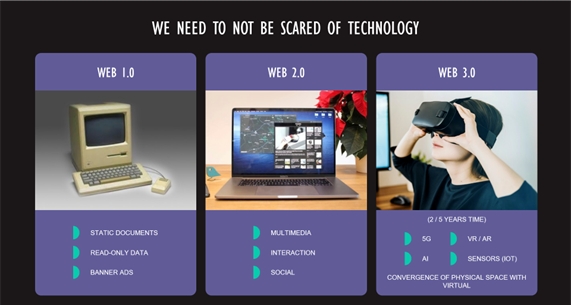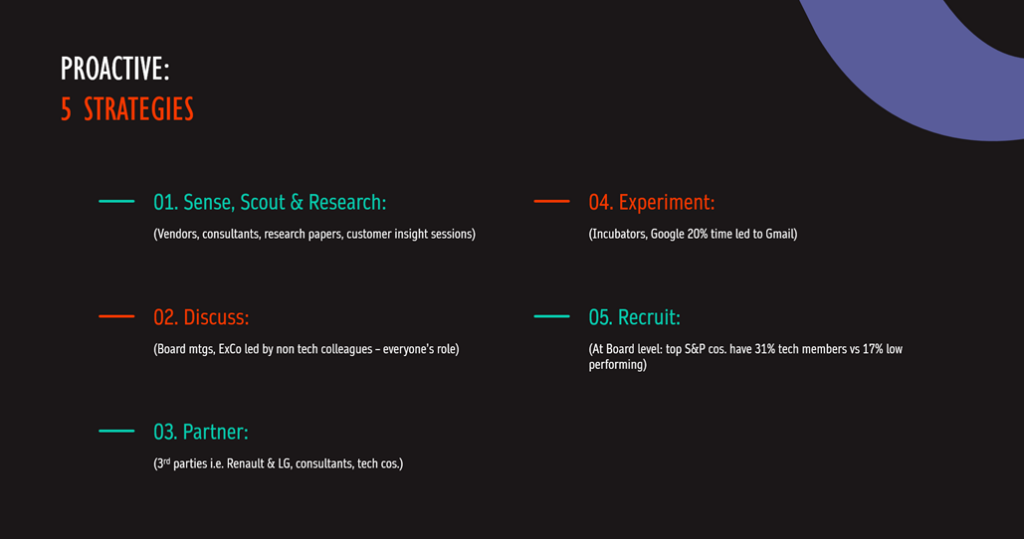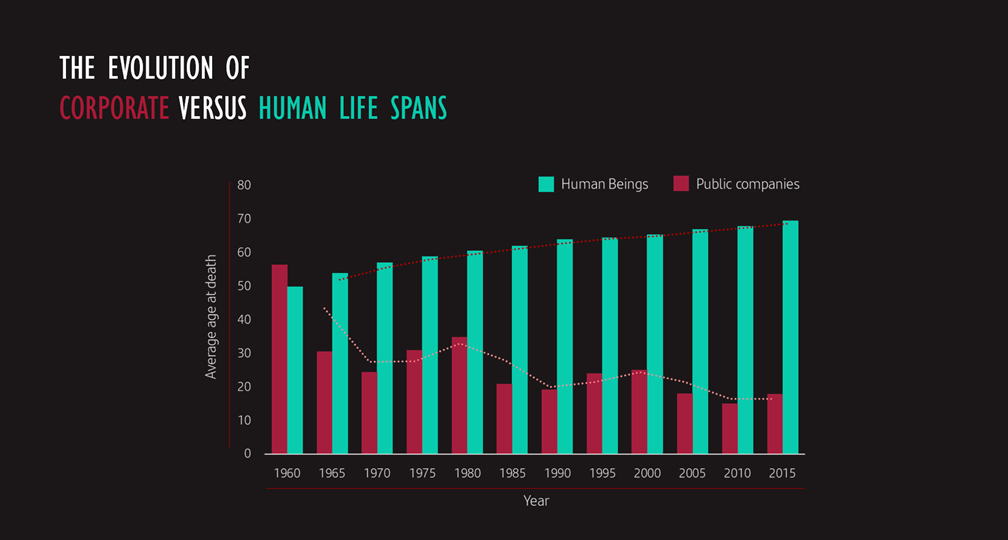Organizations must digitalize to survive: How can HR build this cultural muscle?
- 6 Min Read
HR is responsible for developing the cultural muscle organizations require to embrace digitalization and meet customer needs. In the age of ‘Digital Darwinism,’ the alternative is extinction. What proactive strategies can HR and L&D leaders take?
- Author: Daniel Strode
- Date published: Oct 31, 2023
- Categories

Our businesses are operating with the headwind that is the 4th industrial revolution. This revolution is seeing customers become more digital, meaning they are spending ever-increasing amounts of their lives online. With that digitalization, their expectations are increasing, and they are placing a greater emphasis on transparency, personalization, simplicity, and speed of service. Organizations must develop a new cultural muscle.
Technological advances such as Artificial Intelligence, Robotics, Web 3.0, and the Internet of Things – amongst others – are supercharging companies’ abilities to offer customers what they want and request. However, these technologies necessitate significant changes within companies and how they operate. From changing jobs (automation and the need to learn new skills constantly) to new business structures and a focus on new business units (cyber security, data privacy, ethics…).

Only companies that have a corporate culture that is receptive to digitalization and embracing new technology will survive. We are living in an age of Digital Darwinism and this time it is “survival of the clickiest.” The question for organizations is how to survive.
Building your organization’s cultural muscle
One of the answers to this question is to build a cultural muscle inside our companies to ensure we embrace technology, rather than fear it. Many leaders run from technology because of the fear of job losses and change.
Web 1.0 caused mass panic across the globe as it was supposed to destroy jobs. However, a 2011 McKinsey study found that the internet had been a catalyst for job creation with 2.6 new jobs being created for each job lost due to the technology. Their final finding was that the internet, in 2011, accounted for 3.4% of gross domestic product, and 21% of the gross domestic product growth over the prior five years could be accounted for by the internet and its technologies – hardly the disaster we expected. This is a pattern that continues to repeat with each new wave of technological advancement.
If we want to build a culture within our companies of embracing technology and trying new things, we can consider five approaches to building this muscle and institutionalizing this behavior.

1. Sense, scout, and research
As we have seen, the market and world are changing so rapidly that we can’t possibly stay on top of every change that is happening by ourselves, so we must ask for the support of technology vendors in the market to come and explain their new products regularly.
If you are time-limited, you could count on a consulting firm to provide you with a summary of all the vendors. But if these avenues are not available to you, take advantage of the many public resources that look at ‘top trends’ in technology.
Lastly, you could run regular customer insight sessions in the form of surveys or roundtables to understand what your customers’ views are on technology and research their opinions and needs. You can ask third parties to help if needed.
2. Discuss
It is critical to talk about technology. Consider holding regular Board Meetings or Strategy Days to discuss with all your top leadership the latest in technology trends and brainstorm how your organization could use technology across the whole company. Try to ensure that technology is everyone’s responsibility, not just the Chief Technology Officer and the team there.
You can also take advantage of the multitude of trade events and conferences around innovative technologies and discuss your findings within your company.
3. Partner
We can’t expect to be experts at everything. Technology may not be your business’s normal bread and butter, but it will be needed. So, consider partnering with third parties, from the technology industry, to explore if there are new products or services you could offer jointly.
You can also ask a consulting firm or technology company to undertake a deep dive, a root and branch review of your business (in terms of existing technology, and future technologies) to identify where new opportunities are for you to try new things.
4. Experiment
A critical part of building a cultural muscle to embrace technology is ensuring there is space for experimentation. Experiments are often more important than expertise. You can learn and try again if you fail, or you can strike the jackpot: either is a good outcome. Give your teams a space to safely try new things with real customers and seek their feedback. Take an ‘incubator’ approach and reduce your enterprise risk. Scale what works, and experiment smartly.
Take inspiration from giants such as Google. Google, and their famous “20% time” saw employees be given a day a week to work on projects outside of the scope of their daily work. This was responsible for Gmail amongst other innovations! Give your teams time to innovate and try new ideas.
5. Recruit
It is important to have technology skills through your company. On the Board of Directors, ensure you have senior leadership with a track record of deploying technology. Their understanding of new technology and how it may fit into a business is vital. A Deloitte study found that high-performing S&P 500 companies were more likely (31%) to have tech-savvy Board members than lower-performing companies (just 17%).
Build your cultural muscle or suffer a shorter lifespan
Companies have always fallen by the wayside, with those who have embraced technology and those who have shied away from it suffering differing fates: those who fail to embrace technology are going to fall away faster in the coming years. A brief study of the S&P 500 shows us that the largest firms now have far shorter lifespans than humans, though this wasn’t the case as recently as the 1960s when the top firms outlived humans! We can all remember Nokia, Blockbuster, and Kodak as examples of firms that failed to embrace technology and build a culture receptive to digital change. In just 5 years, we can expect up to 75% of the S&P 500 today to no longer be in that index.

To avoid suffering this fate, organizations must build this cultural muscle. Embrace technology, rather than run away from it. Remember you can throw technology into your company but that alone won’t lead to success. You need this cultural muscle to ensure a lasting chance of success. The reality is that digital transformation isn’t about just implementing and using technology, but rather it is about operating digitally.
Have regular technology discussions. Ensure some leaders know and get technology across your teams and the Board. Be willing to partner with other firms who know more so you can change your business models. And enable and embrace experimentation, with culture as the driver.
_______________
Daniel Strode is a culture and innovation expert, business school professor, and, author of the book The Culture Advantage: Empowering your People to Drive Innovation (Kogan Page)








